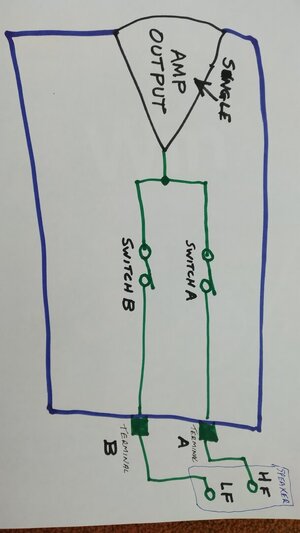It is not any type of bi-amping.
I was hoping that I wouldn't have to do one of my (diabolical) drawings....but a picture speaks a thousand words.
Inside the blue box below is how it is inside his amp.
There is a SINGLE amp output....
parallel feeding terminals A and terminals B via switches.
The drawing shows how he's connected to his speakers:
View attachment 7239
Other bi-wirers might have paired both cables at the A terminals but, as you can clearly see, that would be electrically identical to what he's done.
No more than one amp involved.
So obviously NOT bi-amping.
(And hopefully Al can see why the 16 ohm caution doesn't apply).


